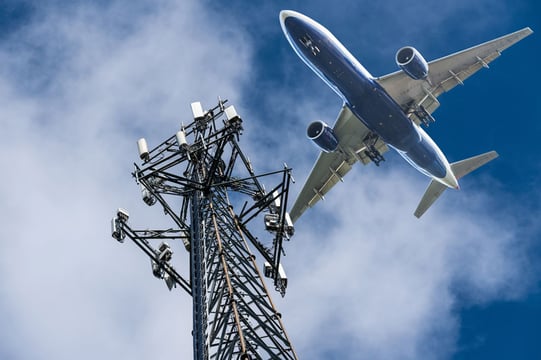Preventing RF interference from compromising mission-critical services

Radio Frequency interference (RFI) is unavoidable in a wireless-driven world. All products, devices, and components comprising RF hardware will emit RFI. Exactly how much depends on the device type, design, and the application. The challenge for RF design engineers, Telco companies, network operators, and original equipment manufacturers (OEMs) is keeping interference levels to a minimum for operability, usability, and safety reasons.
Whilst RFI can pose serious operational and performance challenges to telecommunications equipment, the situation is not mission-critical. However, the consequence of RFI on services such as air traffic control, emergency first responders, military, defense, and national security takes RFI challenges to an entirely different level. Interruption to safety-critical communications may lead to dangerous situations or delay the arrival of life-saving equipment.
This blog looks at key considerations relating to RFI interference mitigation to ensure mission-critical services are not compromised.
Selecting the right RF hunting tools
Hunting down RF interference has typically involved dispatching engineers to different locations equipped with handheld RF monitoring devices. Apart from being time-consuming, battery-draining, and labor-intensive, these monitoring devices do not deliver the levels of accuracy needed in mission-critical situations.
Handheld RF monitoring systems can only detect signals at ground level and in the immediate vicinity. RFI sources that tend to disrupt air traffic control systems or public safety communications tend to be erratic. Causes can range from taxi drivers installing jammers so management cannot monitor them to baby monitors transmitting on the wrong frequency ranges to amateur drones entering controlled airspace. Unless manual teams are in the right place at the right time, finding and classifying RFI using handheld equipment is impossible.
Not only are handheld spectrum monitoring systems expensive to operate in terms of time and resources, they can be inefficient and pose serious accuracy concerns as they have not been designed to identify and flag potential risks automatically. Mission-critical situations require a network of fixed RF receivers to be strategically deployed over a predetermined area for accurate 24/7 RF monitoring. Such a system enables the real-time detection and identification of specific RF interference events and timestamps, thus supporting informed decision-making in line with the severity of the situation.
Critical national infrastructure (CNI) assets such as power stations, critical manufacturing, data centers, communications, or healthcare are all impacted by RFI and require accurate RF detection technology that is fixed to safeguard against interruptions and disruptions to operations and to support TTR processes.
RFI is a constantly moving target
To effectively track down and mitigate the impact of RFI on safety critical services, understanding the root causes being amplified because of global digitization is key.
Interference sources fall into two categories: intentional and unintentional. Intentional RFI is the deliberate exploitation of the RF spectrum to interrupt genuine RF signals, disrupt services through jamming, or provide false information through spoofing.
On the other hand, unintentional RFI can result from a range of causes, including poor-quality electronic design, failure to meet regional protocols, welding technologies, portable radios transmitting on the wrong frequency bands, outdated, degraded, or improperly installed cellular signal boosters, and lighting ballasts. Such causes may appear trivial, but they can have severe consequences for mission-critical situations.
Classifying RFI
Security and operational teams need agile, high-performance spectrum analyzing equipment that allows them to distinguish between intentional and unintentional RFI quickly.
Once detected, unintentional RFI is usually easily fixable. The bigger challenge is having the right tools to detect and identify different RFI sources in real-time. RFI is often intermittent, occurring at certain times and for short periods. But if something uses the same frequency bands as an aircraft’s distance measuring equipment (DME), air traffic control systems can be thrown into total disarray.
Sources must be geolocated and swiftly handled to avoid unnecessary disruptions, downtimes, or closures. The only way to achieve this is by sweeping the entire RF spectrum 24/7 to determine and act upon trends and patterns.
The ubiquity of drones
Drones are bringing commercial aviation to a standstill and compromising emergency operations thanks to their usefulness and affordability.
Without effective counter-drone technology to assess activity and flag concerns, ground staff rely on eye-witness reports—unfit for purpose in a modern world. RF transmissions emitted by these UAVs must be identified and located in real-time to prevent unnecessary disruptions and, more crucially, avoid potential collisions that could ultimately lead to loss of life. Handheld drone monitoring systems are inadequate for multiple reasons, not least because they are restricted to narrowband detection.
Conclusion
RFI is not a temporary communications issue. It is a severe problem that is intensifying due to global digitization, and as such, it will continue to threaten mission-critical services. Spectrum monitoring offices must have agile and intelligent tools to stay ahead of the game by mitigating the impact of interference and supporting effective Time to Resolution strategies.
